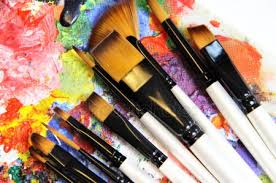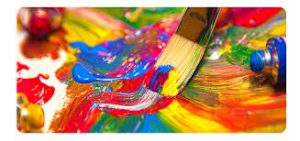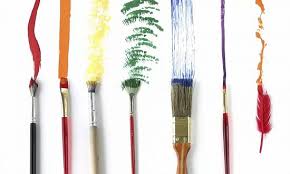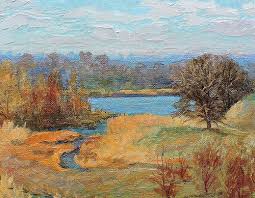viscous and thicker
LENINGRAD SCHOOL OF PAINTING (part 1)
 The history of the Leningrad school of painting covers the period from the beginning of the 1930s to the beginning of the 1990s. Having arisen in the midst of a heated struggle over the development of art and art education in the USSR, it became that missing link, thanks to which the traditions of the national art school and realistic painting were preserved and received a new development.
The history of the Leningrad school of painting covers the period from the beginning of the 1930s to the beginning of the 1990s. Having arisen in the midst of a heated struggle over the development of art and art education in the USSR, it became that missing link, thanks to which the traditions of the national art school and realistic painting were preserved and received a new development.
Having made a significant contribution to Soviet fine art, to the formation of aesthetic views and the spiritual world of modern generations, the Leningrad school left the stage at the turn of the 80-90s, fulfilling its historical and artistic mission and giving way to the era of the transitional period. Continue reading
STYLES AND DIRECTIONS IN THE FINE ART (part 2)
 Classicism – an artistic style in Western European art of the XVII – beginning. XIX century and in the Russian XVIII – early. XIX, referring to the ancient heritage as an ideal for imitation. It manifested itself in architecture, sculpture, painting, arts and crafts. Classic artists considered antiquity the highest achievement and made it their standard in art, which they sought to imitate. Over time, degenerated into academicism.
Classicism – an artistic style in Western European art of the XVII – beginning. XIX century and in the Russian XVIII – early. XIX, referring to the ancient heritage as an ideal for imitation. It manifested itself in architecture, sculpture, painting, arts and crafts. Classic artists considered antiquity the highest achievement and made it their standard in art, which they sought to imitate. Over time, degenerated into academicism.
Romanticism Romanticism is a trend in European and Russian art of the 1820-1830s that replaced classicism. Romantics highlighted individuality, contrasting the idealistic beauty of the classicists with “imperfect” reality. Artists were attracted by bright, rare, extraordinary phenomena, as well as images of a fantastic nature. In the art of romanticism, a sharp role is played by keen individual perception and experience. Continue reading
STYLES AND DIRECTIONS IN THE FINE ART (part 1)
 The number of styles and directions is huge, if not endless. The key feature by which works can be grouped by style is the unified principles of artistic thinking. The change of some methods of artistic thinking by others (alternation of types of compositions, methods of spatial constructions, peculiarities of color) is not accidental. Historically changeable is our perception of art.
The number of styles and directions is huge, if not endless. The key feature by which works can be grouped by style is the unified principles of artistic thinking. The change of some methods of artistic thinking by others (alternation of types of compositions, methods of spatial constructions, peculiarities of color) is not accidental. Historically changeable is our perception of art.
Building a system of styles in a hierarchical order, we will adhere to the Eurocentric tradition. The largest in the history of art is the concept of the era. Each era is characterized by a certain “picture of the world”, which consists of philosophical, religious, political ideas, scientific ideas, psychological characteristics of worldview, ethical and moral norms, aesthetic criteria of life, which distinguish one era from another. Continue reading



